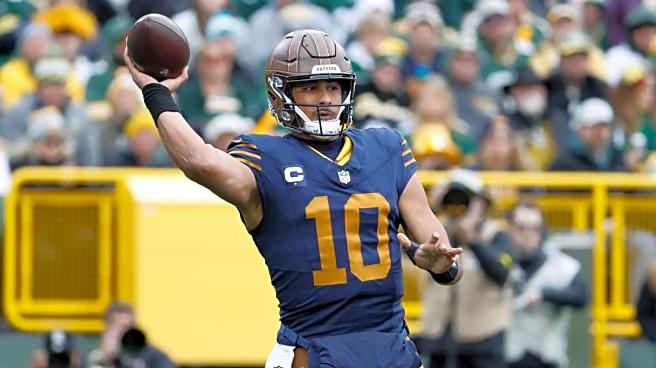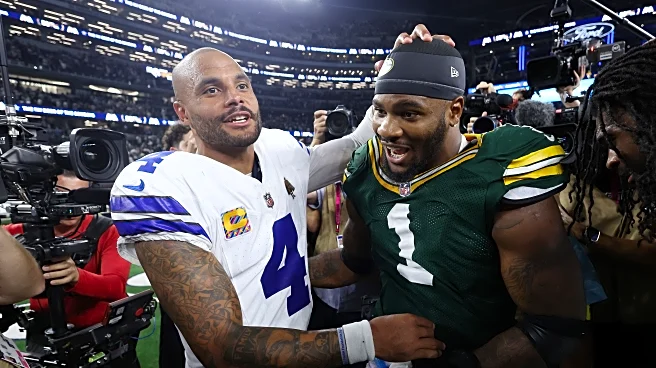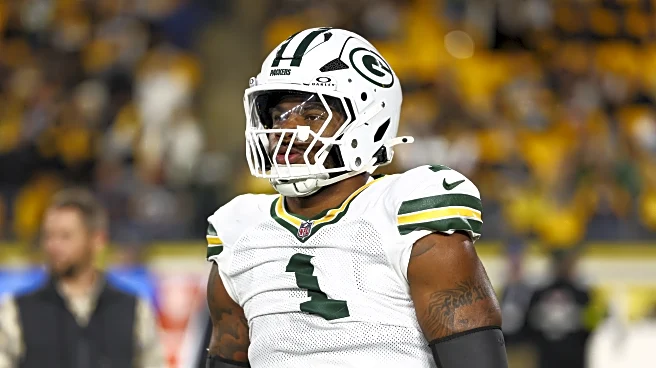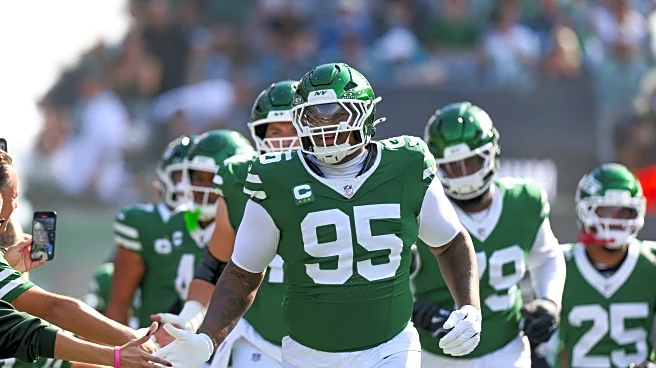What's Happening?
Micah Parsons, a star pass-rusher, was traded from the Dallas Cowboys to the Green Bay Packers with a unique 'poison pill' clause designed to prevent him from joining the Philadelphia Eagles in the future. According to ESPN's Adam Schefter, if the Packers trade Parsons to an
NFC East team, they must send their 2028 first-round draft pick to the Cowboys. This clause also applies to defensive lineman Kenny Clark, who was part of the trade, if he is traded to an NFC North club. The clause is effective until the end of the 2026 season. The Eagles had shown interest in Parsons before his move to Green Bay, but their trade inquiry was rejected by Dallas.
Why It's Important?
The inclusion of a 'poison pill' clause in the Parsons trade highlights strategic maneuvers within the NFL to control player movement and maintain competitive balance. This clause ensures that Parsons, a four-time Pro Bowler, remains out of reach for the Eagles, a divisional rival, potentially impacting the competitive dynamics within the NFC East. Such clauses can influence team strategies and player career trajectories, affecting how teams negotiate trades and manage their rosters. The restriction on trading 2028 first-round picks until the clause expires further complicates future trade negotiations for both the Cowboys and Packers.
What's Next?
The Packers are set to face the Philadelphia Eagles on Monday night, which could be a significant matchup given the recent trade dynamics. The 'poison pill' clause will continue to influence trade strategies for both the Cowboys and Packers until its expiration in 2026. Teams may need to navigate these restrictions carefully in future negotiations, potentially leading to more complex trade agreements. The impact of Parsons' performance with the Packers will be closely watched, as his presence could alter the team's defensive capabilities and overall season trajectory.
Beyond the Headlines
The use of 'poison pill' clauses in NFL trades raises questions about the ethical implications of restricting player movement and the potential for such clauses to become more common in sports contracts. This strategy reflects broader trends in professional sports where teams seek to protect their interests and maintain competitive advantages. The long-term effects on player agency and team dynamics could lead to discussions about contract negotiations and the balance of power between players and teams.














